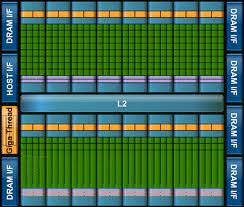When the GPU, an acronym for graphics processing unit, is used in combination with the CPU for the purpose of performing computations related to the scientific and engineering fields, this application is referred to as GPU computing. Its advantage to the user lies in its exceptionally high speed wherein the sequential aspect is looked after by the CPU and the calculations are executed by the GPU.
The use of GPU for computing began at the turn of the century courtesy of the computer scientists and researchers who started making use of GPU for computations and found that it was a tremendous catalyst for a wide range of scientific applications. Only one hurdle which remained was that of compatibility in terms of graphics programming language and this was overcome by modifying the GPU and adding support for high level computer languages.
Today most of the computers are equipped with GPU which accounts not only for most of their graphics related output but also for the graphics used in computer games and animation movies. One of the considerations however is the driver and while the current drive may be suitable, there are times when the later versions and models of drivers may be required for running this application.
Prior to using GPU on a computer it is essential to check whether the device has the in-built capability – this may vary according to the operating system being used and there are specific GPU programs for every operating system. Size of the memory and adaptor types are some of the other factors which need to be checked out along with special requirements of the project to ensure compatibility.
Owing to the hybrid nature of GPU technology, this kind of computing application features hundreds of parallel cores and thus is capable of running as many parallel threads. As compared to CPUs’ which are specialized in serial operations, data fed into the GPU is split into many fragments each of which is processed in parallel thus explaining the high speed.
It is this parallel processing architecture which is being capitalized upon by programmers for performing the most critical sections of their task accurately and quickly.
Further research into this field has proved that if the CPU is offloaded systematically and gradually, the increase in speed is phenomenal and likely to improve even more with new technologies on the horizon. An important aspect which the user should be aware of is that GPU computing is performed only when the computer is switched off. Not heeding this advice would result in unsteady graphic output and moreover would also require a change in preferences.
It can also be configured to switch off automatically when incompatible operations are being run.


No comments:
Post a Comment